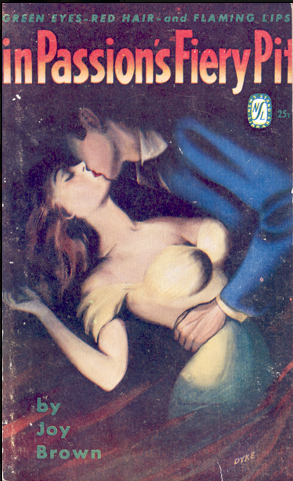Just think how much time went into the staircase gracing He Learned About Women… (Toronto: News Stand Library, 1950). And is that check-in sign really necessary?
 |
| Lobby Girl Gerald Foster Toronto: News Stand Library |
I much prefer his style to that of prolific NSL regular D. Rikard. The differences between the two illustrators is best seen in their approaches toward Al Palmer's Sugar-Puss on Dorchester Street. Rickard's 1949 cover has Sugar-Puss walking beneath a brightly lit marquee, bringing too much light to what is a dark, if somewhat silly story. Dyke's 1950 cover, produced for the American market, better captures the novel's atmosphere, though it does make our two lovebirds, Jimmy and Gisele, look like pimp and prostitute.
Credit goes to both illustrators for capturing Giselle's breasts, "large and firm; a legacy of her Norman ancestry."
Bricks and mortar aside, Dyke shows some restraint in terms of detail with Sugar-Puss on Dorchester Street. To be fair, the illustrator would on occasion go for something relatively simple.
Dyke's cover for In Passion's Fiery Pit (1950) by the Joy Brown (later Carroll) is a favourite. Don't blame the illustrator for the cut-off title, it's typical of News Stand Library.
What follows are four more of my favourite Syd Dyke NSL covers.
 |
| Never See the Sun Hall Bennett 1950 |
 |
| Carnival of Love Anthony Scott 1950 |
 |
| Strange Desires Alan Malston 1950 |
 |
| Too Many Women Gerry Martin 1950 |
He Learned About Women… Too Many Women.
 |
| Hospital Nurse Lucy Agnes Hancock |
Gotta love those floor tiles.
Related post:













































